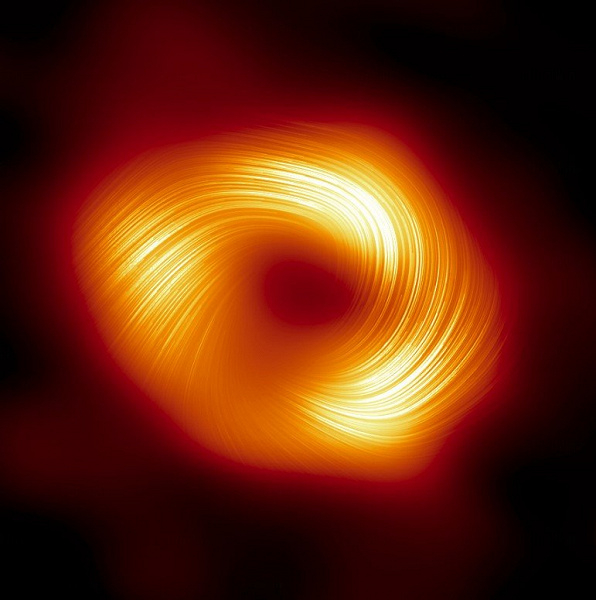Researchers are surprised by the similar magnetic fields of black holes Sgr A* and M87*
The international Event Horizon Telescope collaboration, which captured the historic first-ever image of a black hole, has once again raised eyebrows in the scientific community. This distinguished team of scientists has once again presented an image of the black hole at the center of our galaxy, Sagittarius A*.
Black holes – These are cosmic objects with extremely strong gravity, absorbing all matter and light falling into their event horizon. This makes them virtually invisible to ordinary observation. Although the black hole itself cannot be observed, the rotating gas and matter in its vicinity emit light bright enough to be detected. To obtain the new image, the Event Horizon Telescope collaboration used the effect of polarized light to image the powerful magnetic fields surrounding the black hole.
«The polarization structure we observe indicates the presence of strong, curved and organized magnetic fields near the black hole Sgr A*», — said Sarah Issaun, one of the project's co-leaders at the Harvard-Smithsonian Center for Astrophysics.
The new image provided an opportunity to compare Sgr A* with the black hole M87*, the first image of which was obtained earlier. Researchers have discovered similarities in the structure of the magnetic fields of both black holes.
«Although Sgr A* has a strikingly similar polarization structure to that observed in the much larger and more powerful black hole M87*, we have learned that strong and ordered magnetic fields are crucial the significance of how black holes interact with the gas and matter around them», — said Issaun.
Polarization of light refers to the orientation in which the waves vibrate. When light is polarized, it oscillates in a specific direction, and although it looks the same as normal light to the human eye, researchers study polarized light to learn about the orientation of magnetic fields.
«The polarized light of hot, glowing gas near black holes helps draw conclusions about the structure and strength of the magnetic fields that permeate the flows of gas and dust that “feed” black hole»,— explained project co-leader Angelo Ricarte.
Researchers used a similar technique to study the magnetic fields of M87* in 2021, and now, with similar Sgr A* data, they can compare the two. The striking discovery is that although Sgr A* is more than a thousand times smaller than M87*, they have similar magnetic fields.
Mariafelicia De Laurentiis, deputy project scientist for the project, notes that this discovery implies universal physical processes governing the feeding and evaporation of black holes. In addition, it helps improve theoretical models and simulations, and expands our understanding of the physics of black holes near the event horizon.

